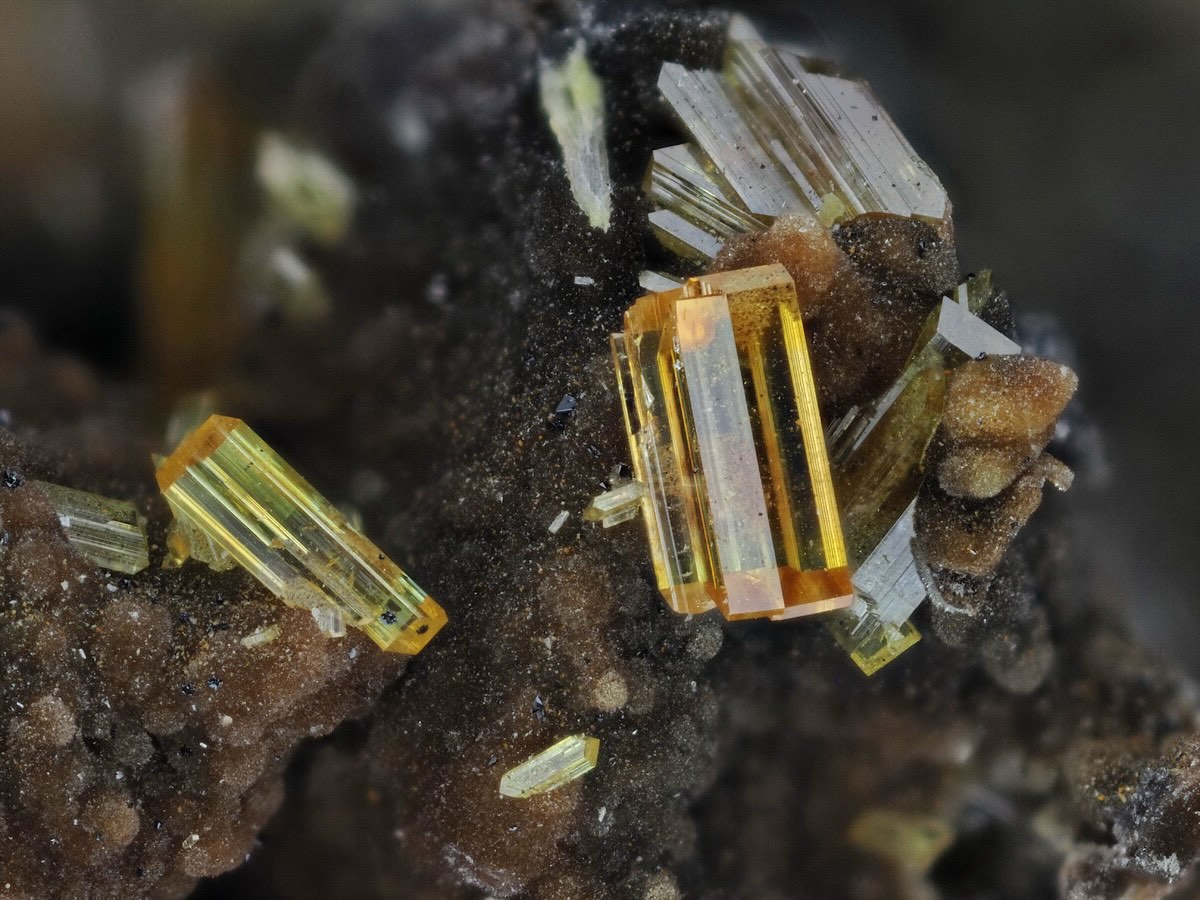
Raspite is a rare and intriguing mineral that captures the interest of geologists and collectors alike. Found primarily in Australia, this mineral boasts a striking yellow color and a unique crystal structure. But what exactly makes raspite so special? Raspite is composed of lead tungstate, giving it a high density and a brilliant luster. Its crystals often form in slender, elongated shapes, making each specimen a fascinating study in mineralogy. Beyond its physical properties, raspite holds historical significance, having been discovered in the late 19th century. Whether you're a seasoned collector or a curious newcomer, learning about raspite can offer a glimpse into the wonders of the natural world. Ready to dive into 30 captivating facts about this extraordinary mineral? Let's get started!
Key Takeaways:
- Raspite is a rare mineral named after Charles Rasp, discovered in Australia. It has a bright yellow color, is relatively soft, and is valued by collectors for its unique appearance and rarity.
- Raspite is primarily found in the Broken Hill mine in Australia and has significance in understanding lead-tungsten deposits. Its bright color and luster make it attractive for display in museums and educational institutions.
What is Raspite?
Raspite is a rare mineral that captures the interest of geologists and collectors alike. Named after Charles Rasp, the discoverer of the Broken Hill ore deposit in Australia, this mineral has a unique story and fascinating properties.
- Raspite is a lead tungstate mineral with the chemical formula PbWO4.
- It was first discovered in 1897 at the Broken Hill mine in New South Wales, Australia.
- The mineral is named after Charles Rasp, who discovered the Broken Hill ore deposit in 1883.
- Raspite typically forms in oxidized zones of lead-tungsten deposits.
- It is often found in association with other minerals like cerussite, anglesite, and stolzite.
Physical Properties of Raspite
Raspite's physical characteristics make it stand out among other minerals. Its unique appearance and structure are key identifiers.
- Raspite crystals are usually prismatic and can be elongated or short.
- The mineral has a Mohs hardness of 3, making it relatively soft.
- It has a specific gravity of 8.28, indicating its high density.
- Raspite exhibits a bright yellow to orange-yellow color.
- The mineral has an adamantine to greasy luster, giving it a shiny appearance.
Chemical Composition and Structure
Understanding the chemical makeup of raspite helps in identifying and studying this mineral. Its composition is quite specific and interesting.
- Raspite is composed of lead (Pb), tungsten (W), and oxygen (O).
- The mineral crystallizes in the monoclinic crystal system.
- It is isostructural with stolzite, meaning they share the same crystal structure but have different chemical compositions.
- Raspite's crystal structure consists of WO4 tetrahedra linked by Pb atoms.
- The mineral can sometimes contain trace amounts of other elements like calcium and iron.
Occurrence and Locations
Raspite is not found everywhere. Its occurrence is limited to specific geological settings and regions.
- The primary locality for raspite is the Broken Hill mine in Australia.
- Other notable occurrences include mines in Namibia and the United States.
- Raspite is typically found in the oxidized zones of lead-tungsten deposits.
- The mineral can also be found in secondary mineral assemblages formed by the alteration of primary lead-tungsten minerals.
- Collectors often seek raspite specimens from these specific localities due to their rarity.
Uses and Significance
While raspite may not have widespread industrial uses, it holds significant value in other areas.
- Raspite is primarily valued by mineral collectors for its rarity and unique appearance.
- The mineral is studied by geologists to understand the formation and alteration of lead-tungsten deposits.
- Raspite specimens are often displayed in museums and educational institutions.
- The mineral's bright color and luster make it an attractive addition to mineral collections.
- Raspite can also be used as an indicator mineral in the exploration of lead-tungsten deposits.
Interesting Facts about Raspite
Here are some intriguing tidbits about raspite that highlight its uniqueness and appeal.
- Raspite is often confused with stolzite due to their similar appearance and structure.
- The mineral's name honors Charles Rasp, a German-Australian prospector and discoverer.
- Raspite crystals can sometimes exhibit twinning, where two crystals grow together in a specific orientation.
- The mineral's bright yellow color is due to the presence of lead and tungsten in its structure.
- Raspite is considered a collector's mineral due to its rarity and the difficulty in obtaining high-quality specimens.
The Fascinating World of Raspite
Raspite, a rare mineral, captivates with its striking yellow color and unique crystal structure. Found mainly in Australia, this mineral is a lead tungstate, making it both beautiful and scientifically intriguing. Collectors and geologists alike treasure raspite for its rarity and the challenges it presents in identification and extraction.
Understanding raspite's formation and properties can deepen appreciation for Earth's geological wonders. Its discovery in the Broken Hill mines adds a layer of historical significance, connecting modern enthusiasts with past mining endeavors.
Whether you're a seasoned collector or just curious about minerals, raspite offers a glimpse into the complexity and beauty of natural formations. Keep exploring, and who knows? You might stumble upon your own piece of this extraordinary mineral. Happy hunting!
Frequently Asked Questions
Was this page helpful?
Our commitment to delivering trustworthy and engaging content is at the heart of what we do. Each fact on our site is contributed by real users like you, bringing a wealth of diverse insights and information. To ensure the highest standards of accuracy and reliability, our dedicated editors meticulously review each submission. This process guarantees that the facts we share are not only fascinating but also credible. Trust in our commitment to quality and authenticity as you explore and learn with us.
